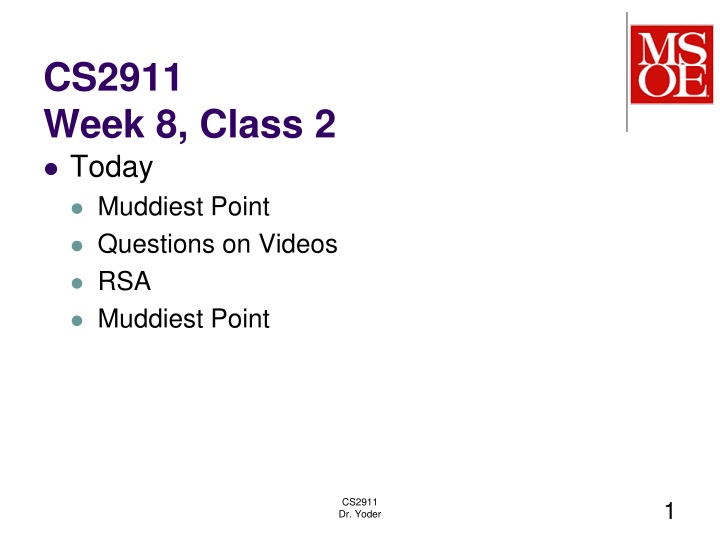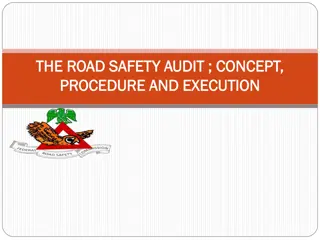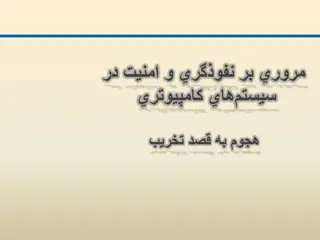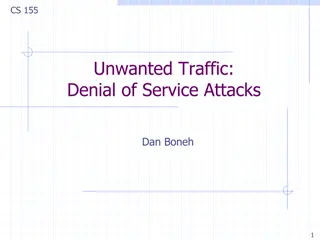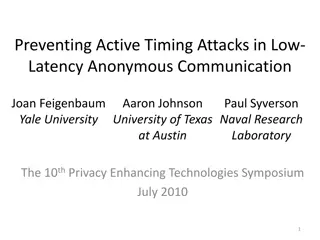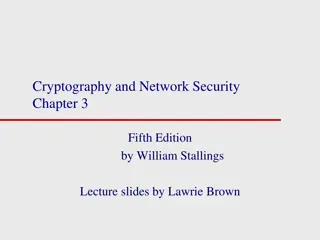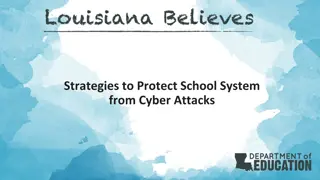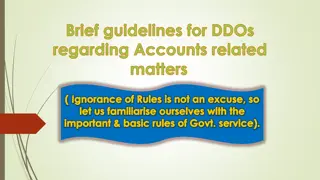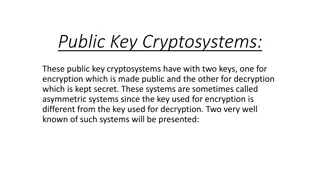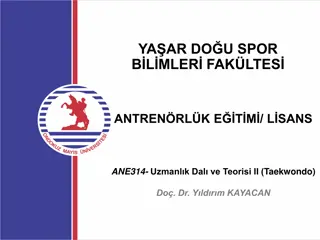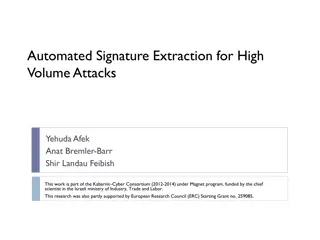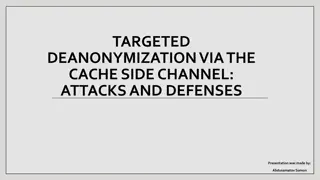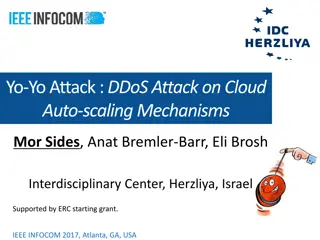Muddiest Point: Questions on RSA, DDoS Attacks, and Block Cipher Algorithms
In this collection of images, various concepts related to RSA encryption, DDoS attacks, block cipher algorithms like DES and AES, TCP protocols, and real-life applications of cryptography are explored. The images cover topics such as the Mirai-infected devices used in a DDoS attack on Dyn, differences between TCP Tahoe and TCP Reno, key length comparisons for encryption, and the importance of secure web protocols like TLS. The content delves into technical details while providing visual aids to aid understanding.
Download Presentation

Please find below an Image/Link to download the presentation.
The content on the website is provided AS IS for your information and personal use only. It may not be sold, licensed, or shared on other websites without obtaining consent from the author.If you encounter any issues during the download, it is possible that the publisher has removed the file from their server.
You are allowed to download the files provided on this website for personal or commercial use, subject to the condition that they are used lawfully. All files are the property of their respective owners.
The content on the website is provided AS IS for your information and personal use only. It may not be sold, licensed, or shared on other websites without obtaining consent from the author.
E N D
Presentation Transcript
CS2911 Week 8, Class 2 Today Muddiest Point Questions on Videos RSA Muddiest Point CS2911 Dr. Yoder 1
DDoS attack on DNS provider Dyn Just for fun: What is a distributed Denial of Service attack? What is a bot-net? How many Mirai-infected devices were used in the attack on Dyn? How many Mirai-infected devices are there in the world? CS2911 Dr. Yoder 2
Standard Symmetric Block Cipher Algorithms DES, Triple DES (Data Encryption Standard) NSA AES (Advanced Encryption Standard) NIST, but note NSA involvement in other algorithms published by NIST Blowfish Not standard. Self-published algorithm Why not write your own? (Because ) SE-2811 Dr.Yoder 3
TCP Slow Start Start with a small cwnd (one MSS)
Muddy Point: TCP Tahoe vs TCP Reno Tahoe: (original version) If packet lost, go back to slow start Reno: (new version) If packet lost, go straight to new tthresh (+ 3) Both: Set tthresh to half of the cwind when congestion occurred CS2911 Dr. Yoder 6
Big Picture: How is Lab 9 code used in real life? Lots of people use the web to secure sensitive information like credit cards and social security numbers. All web protocols (HTTPS, SMTP, IMAP, ) use TLS to secure data. TLS uses public-private key algorithms to exchange symmetric keys. RSA is the public-private key algorithm that TLS uses the most often Lab 9 is about RSA. When you complete this lab, you will see how RSA can be turned into a program to encrypt/decrypt data. CS2911 Dr. Yoder 7
Key Length Comparison (bits) "Crack- able date" (2003 estimates) 2006 - 2010 2030 Diffie- Hellman Eliptic Curve Sym- metric RSA 160 224 256 384 1024 2048 3072 1024 2048 3072 80 112 128SECRET TOP SEC SE-1011 Dr. Josiah Yoder Slide style: Dr. Hornick 8
Standard Symmetric Block Cipher Algorithms DES, Triple DES (Data Encryption Standard) NSA AES (Advanced Encryption Standard) NIST, but note NSA involvement in other algorithms published by NIST Blowfish Not standard. Self-published algorithm Why not write your own? (Because ) SE-2811 Dr.Yoder 9
Muddiest Points CS2911 Dr. Yoder 10
WWII Encryption: The Enigma Machine A story of a known- plaintext attack http://www.cnet.com/pi ctures/breaking-the- nazis-enigma-codes- at-bletchley-park- photos/2/ SE-2811 Dr.Yoder 11
WWII Encryption: The Enigma and the Bomb Mavis Batey SE-2811 Dr.Yoder 12
Acknowledgement The content of this video is based in part on lecture slides from a very good textbook, and used with the author s permission: Computer Networking: A Top-Down Approach, 7th edition, by Jim Kurose and Keith Ross Publisher: Pearson, 2017 It is also based on slides provided by Dr. Darrin Rothe
